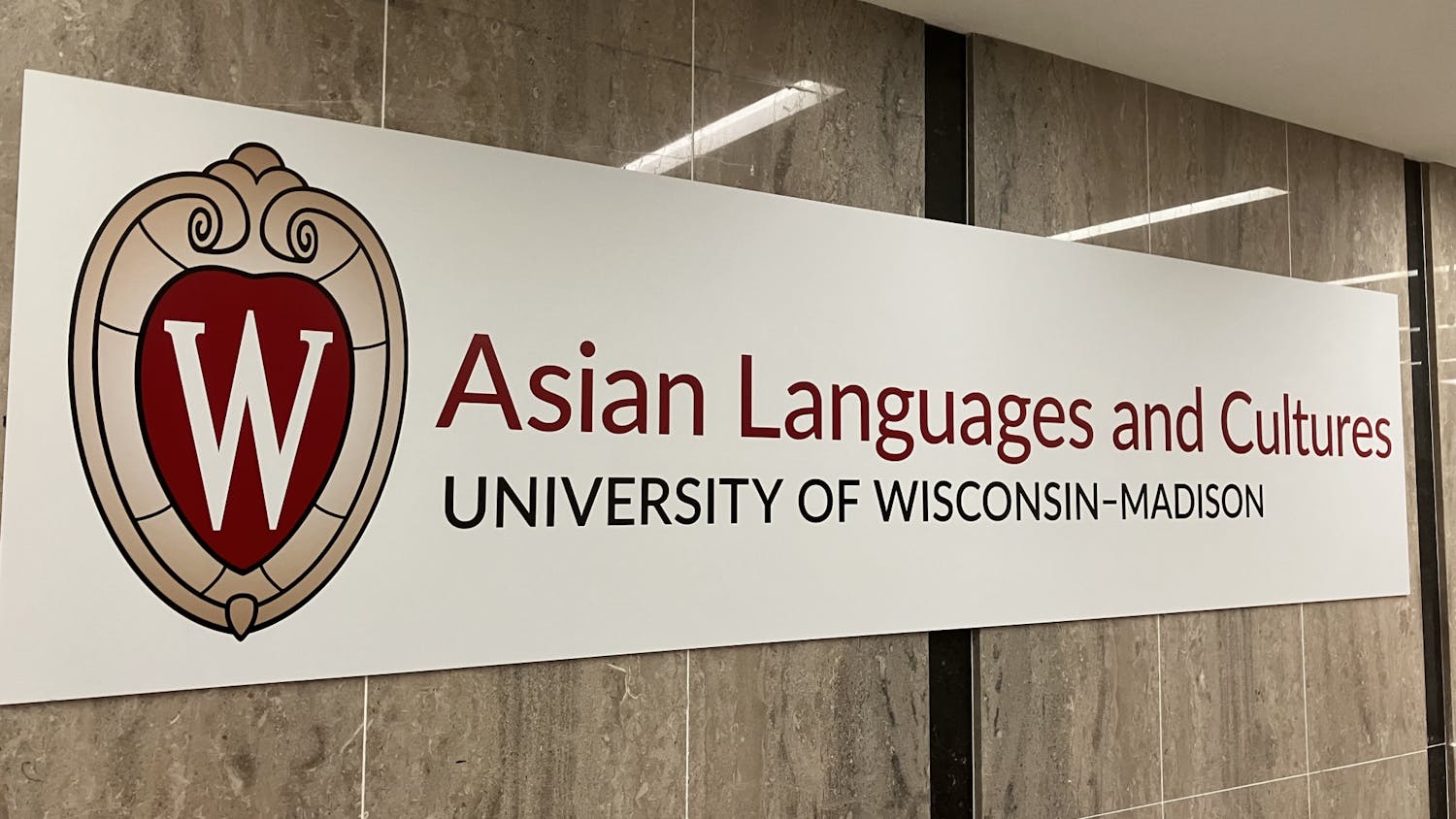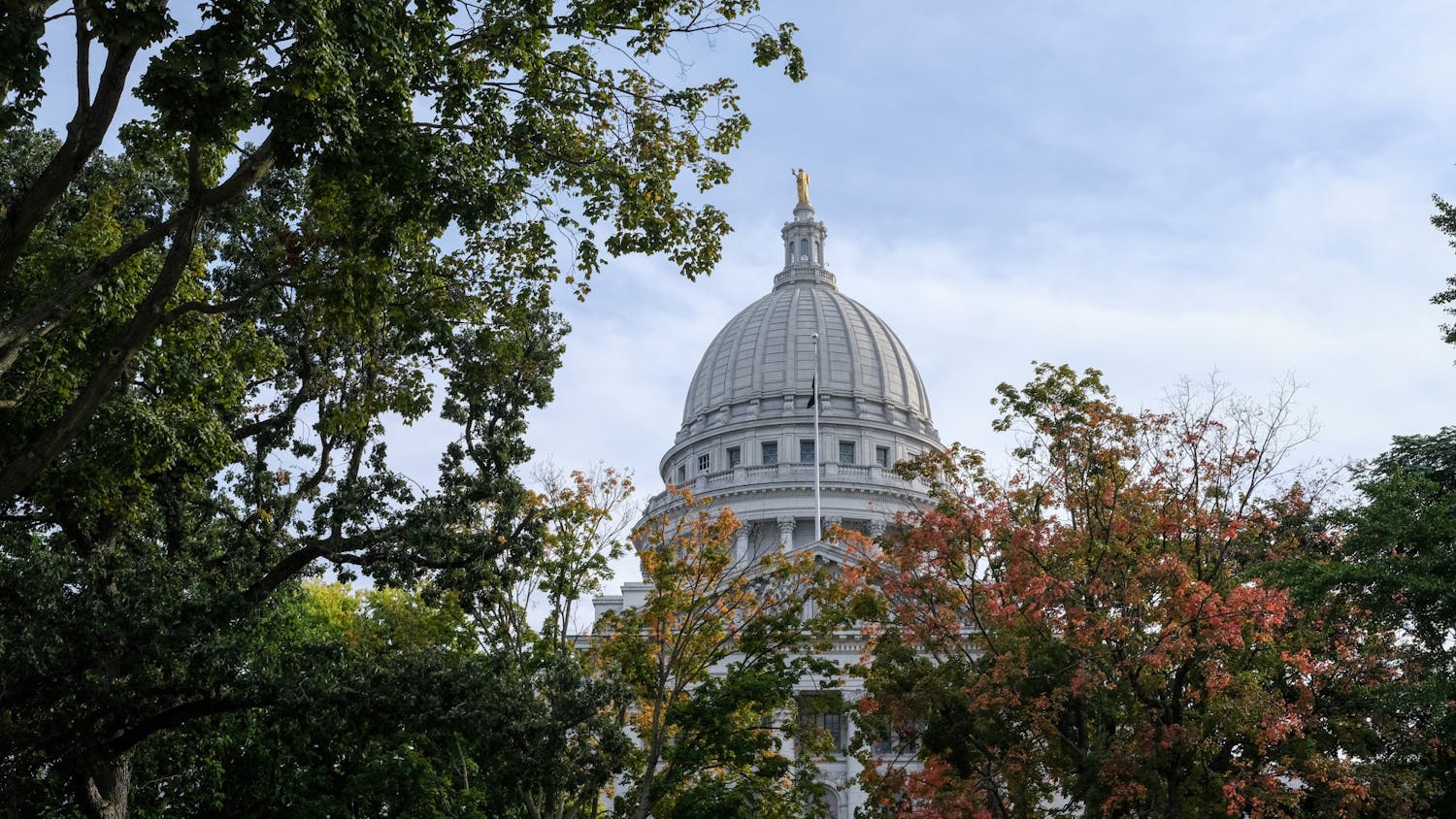The University of Wisconsin-Madison’s Housing division provides students with a plethora of options — one can live by the lake or downtown, in a single or a quad or in a variety of learning communities.
But one thing no student can opt out of is living on stolen land.
Land acknowledgements have made it common knowledge that the state university is on land that has been the ancestral home of the Ho-Chunk people for millennia, but what the university tends to overlook is the historical and present-day implications of its status as a land-grant university.
Last month, the Ho-Chunk Nation and the University of Wisconsin installed a plaque near South Hall on Bascom Hill entitled “Our Shared Future,” representative of the university’s initiative of the same name that aims to demonstrate its respect and support of the sovereign First Nations of Wisconsin.
First-year UW-Madison student Silas Cleveland, who is a citizen of the Ho-Chunk Nation, discussed the university’s land acknowledgment and its purpose.
“It helps people realize that this all was Native land before Manifest Destiny,” Cleveland said about the initiative and the United States’ expansion sparked by 19th century beliefs that it was inevitable and justifiable.
Cleveland added that it helps educate students who may not otherwise think critically about how this land came to belong to the United States — not through a mutual agreement, but by force.
Many public universities like UW-Madison have their origin in the Morrill Act, which was passed under President Abraham Lincoln and distributed the rights to public-domain land to state universities so that they could raise funds.
Today, UW-Madison is proud to call itself a land-grant university, espousing the mission of higher education for all, honoring Lincoln in bronze at the top of Bascom Hill. But both Lincoln and the Morrill Act’s histories are colored with oft-overlooked atrocities. Most see Lincoln as a hero who freed the slaves; few hold him accountable for the largest mass hanging in U.S. history.
In the aftermath of a bloody 1862 conflict between white settlers and several Minnesota bands of Dakota people, the United States tried 303 Dakota men for “killings committed in warfare” (a crime which both sides had committed, as is the nature of war). Their trial was conducted by a U.S. military commission and its fairness reviewed by the U.S. president. Upon review, Lincoln ordered the unjust execution of 38 men.
UW-Madison displays his statue front and center as one of our most iconic campus landmarks.
That same year, Lincoln signed the aforementioned Morrill Act, distributing over ten million acres of land taken from Native peoples to be used for public universities. Of the nearly 80,000 parcels, the federal government failed to follow through and compensate tribes for over 25%.
Adjusted for inflation, these lands raised around half a billion dollars for universities, and some are still generating profits today. Their original occupants were paid a paltry amount, if at all, to remove their title from the land; they did not see a penny of the profits generated afterwards.
In 1832, the Ho-Chunk Nation ceded the land that Madison now occupies. The rights were signed over in a treaty that was then enforced through decades of brutality and violence.
The university’s first residence hall, North Hall, is no exception to the historical pattern of disrespect to the land and its people. The construction of the first few buildings on campus destroyed a sacred Ho-Chunk burial mound; it is estimated that over 80% of these mounds were victims of construction in the Madison area, once home to the greatest concentration of mounds in the world.
The university often constructed buildings on effigy mounds in defiance of the protests of state archaeologist Charles Brown, who played an instrumental role in preserving those that remain today. Today, the university is attempting to collaborate with Indigenous nations, acknowledging the historic role it has had in their oppression. One of its attempts to mend the divide is the naming of Dejope Residence Hall.
Dejope, meaning “four lakes,” is the Ho-Chunk word for the land on which Madison sits. Inside the building are works of Ho-Chunk art and a map of Wisconsin’s tribes.
The installment of UW-Madison’s new “Our Shared Future” plaque goes a step further from just recognizing the existence of Wisconsin’s tribes. The plaque acknowledges the genocide endured by the Ho-Chunk people at the hands of the state and federal governments, and states the university’s eagerness to collaborate with the tribe in order to create a better future —
A future for all who live on this land.
Cormac LaLiberte is the current editor of the college news desk. He is a junior studying linguistics, and has previously reported primarily on social issues pertaining to UW-Madison. Get in touch on Twitter @CormacLaLiberte.






